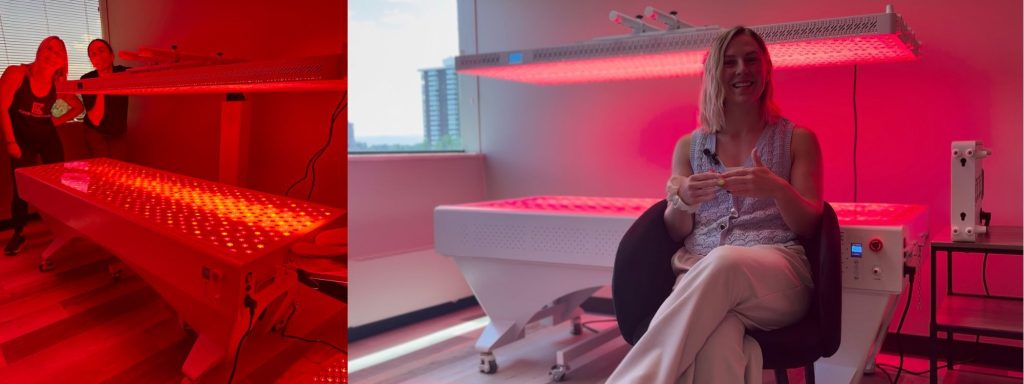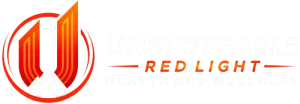Athletes training in the Mile High City face unique challenges related to altitude, muscle fatigue, and recovery time. As a non-invasive modality, red light therapy Denver has surged in popularity among sports teams, weekend warriors, and endurance athletes alike. By delivering specific wavelengths of red and near-infrared light to cells, this therapy activates mitochondrial function, boosts circulation, and accelerates healing processes. This blog unpacks the top advantages of integrating red light therapy Denver into an athlete’s regimen, drawing on scientific insights and local service offerings in Colorado’s capital.
Denver’s elevation can stress the body’s oxygen transport and cellular efficiency, making recovery protocols even more critical. Professionals working with local sprinters, cyclists, skiers, and climbers have observed that targeted light interventions reduce downtime and safeguard joint health. The increased oxidative stress from intense workouts at altitude often leads to elevated inflammation markers and delayed muscle repair. To help athletes adapt, practitioners now combine photobiomodulation with traditional training methods, optimizing cell signaling pathways for faster, more complete recuperation.
Understanding Red Light Therapy

The Science Behind the Glow
Red light therapy operates on the principle of photobiomodulation, where specific light wavelengths penetrate skin and tissue to interact with mitochondrial chromophores. These light-sensitive molecules absorb photons, triggering a cascade that enhances adenosine triphosphate (ATP) production. Elevated ATP accelerates protein synthesis, collagen formation, and cellular turnover, supporting everything from muscle fiber repair to skin rejuvenation. By modulating reactive oxygen species and reducing pro-inflammatory cytokines, this approach fosters a more efficient healing environment for stressed athletic muscles.
Athletes unfamiliar with basic mechanisms often wonder what is red light therapy and how it differs from ultraviolet or blue light treatments. Unlike UV, which can damage DNA, red and near-infrared wavelengths (600–850 nm) bypass the epidermal barrier to stimulate deeper layers without photon-induced harm. This mitochondrial uptick not only revs up cellular energy but also prompts nitric oxide release, which dilates blood vessels. The result is improved nutrient delivery and waste removal, creating a fertile bed for muscle regeneration after grueling sessions.
Wavelengths and Photobiomodulation
Researchers categorize therapeutic light into visible red (630–660 nm) and near-infrared (810–850 nm) bands. Each range offers distinct penetration depths: visible red targets superficial tissues and skin, while NIR reaches muscles, tendons, and even bone. The combination ensures comprehensive benefits—surface collagen synthesis for skin integrity, plus deeper anti-inflammatory effects for joint and muscle health. Photobiomodulation protocols adjust dosage, exposure time, and wavelength to match the athlete’s specific goals, whether that’s reducing DOMS or boosting neuromuscular coordination.
| Wavelength Range | Penetration Depth | Primary Benefit |
|---|---|---|
| 630–660 nm | 5–10 mm | Collagen production, skin health |
| 810–850 nm | 20–50 mm | Muscle repair, inflammation reduction |
Key Benefits for Denver Athletes

Accelerated Muscle Recovery
After high-intensity interval training or long rides along the Front Range, muscle microtears trigger soreness and stiffness. By enhancing ATP synthesis and improving blood flow, red light therapy can cut typical recovery windows in half. Local physical therapists have documented a 30–50% reduction in delayed onset muscle soreness with consistent post-session protocols. This means sprinters can resume speed work sooner, and mountaineers can tackle back-to-back summit attempts with less residual fatigue. Such efficiency has made red light protocols a staple in Denver’s competitive sports landscape.
For athletes seeking a tailored approach, Unstoppable Red Light Health & Wellness creates protocols that integrate your training calendar, workload, and individual physiology. Their expert practitioners calibrate wavelength exposure and session frequency, ensuring each athlete maximizes every watt of photonic power delivered.
Enhanced Athletic Performance
When cellular energy pathways run optimally, endurance, strength output, and neuromuscular coordination all improve. In Denver’s lower-oxygen environment, any boost to mitochondrial efficiency can equate to tangible gains on the track or in the field. Studies show that consistent light therapy use elevates VO₂ max, heart rate recovery, and muscular endurance, providing measurable improvements in athletic performance Denver demands. Coaches have reported tighter turnarounds between workouts and competitions, with fewer reliance on pharmacological aids or high-doses of NSAIDs for soreness relief.
Improved Post-Workout Recovery
Elite and recreational athletes alike recognize that recovery is as critical as the workout itself. Integrating photobiomodulation immediately after sessions helps clear lactic acid, rebuild muscle fibers, and reestablish homeostasis. This targeted intervention allows for more frequent training cycles and less risk of overtraining syndrome. Incorporating red light therapy into post-workout routines can transform an athlete’s readiness, reducing recovery plateaus and minimizing training interruptions.
By leveraging resources like the Red Light Therapy Guide, athletes can navigate protocols, understand session timings, and align their recovery with competitive schedules.
Pain Relief and Inflammation Reduction
Chronic joint pain and inflammation can sideline athletes before they even hit their peak. Photobiomodulation down-regulates inflammatory mediators such as TNF-α and interleukins, while up-regulating anti-inflammatory cytokines. This balance not only soothes arthritic discomfort in hips, knees, or shoulders but also dampens acute soreness in muscles and connective tissues. Therapists in Denver have adopted red light sessions for both chronic pain management and acute injury recovery, witnessing rapid modulation of inflammatory pathways without the side effects of oral medications.
Many athletes have directly asked Does Red Light Therapy Relieve Pain before scheduling their first session, and the consensus from clinical observations is overwhelmingly positive.
Boosted Circulation and Oxygenation
Red light exposure triggers vasodilation through nitric oxide release, expanding microcirculation and improving oxygen delivery to tissues. This effect is especially valuable in Denver’s high altitude, where every additional drop of oxygen can make a difference in endurance and recovery. Enhanced vascular perfusion also expedites metabolic waste clearance, reducing cramping and promoting nutrient uptake. Marathoners and triathletes training for local events like the Denver Rock ‘n’ Roll Marathon often attribute faster recovery times to these circulatory advantages.
| Session Duration | Target Outcome | Typical Frequency |
|---|---|---|
| 10–15 minutes | Acute pain and inflammation | 3–5 times per week |
| 15–20 minutes | Muscle recovery | 2–4 times per week |
| 20–30 minutes | Full-body rejuvenation | 1–2 times per week |
Enhanced Sleep and Adaptation to Altitude
Sleep quality underpins every aspect of athletic conditioning, from cognitive focus to hormonal balance. Photobiomodulation has been shown to elevate melatonin production, improving sleep onset and depth. In Denver’s environment, where disrupted circadian rhythms are common due to altitude stress, red light therapy can re-synchronize sleep cycles. Athletes report feeling more refreshed, experiencing fewer awakenings, and achieving deeper slow-wave sleep stages—critical for tissue repair and memory consolidation.
Sessions, Protocols, and Equipment Considerations
Typical Session Structure
A standard session begins with a brief consultation and targeted placement of LED panels or laser diodes over specific muscle groups or joints. After a short warm-up or dynamic stretch, the athlete lies comfortably for the prescribed duration while the device delivers calibrated light intensities. Post-session, practitioners may incorporate localized massage or compression therapy to enhance lymphatic drainage. Consistency is key: most protocols recommend 3–5 brief sessions per week for peak results, gradually reducing frequency once maintenance thresholds are reached.
Choosing the Right Device
From high-powered Class 4 lasers to full-spectrum infrared saunas, Denver offers a spectrum of red light systems. Portable LED panels cater to home use, while professional clinics equip athletes with medical-grade devices featuring adjustable wavelengths. When comparing options for red light therapy Denver, practitioners advise evaluating irradiance (mW/cm²), wavelength specificity, and session coverage area. Balancing cost, convenience, and therapeutic intensity ensures athletes select equipment that matches their training demands and recovery timelines.
Cost and Access in Denver
Session pricing can vary based on device quality, session length, and clinic location. Entry-level LED studios may start at $30 per 15-minute slot, while specialized sports medicine centers can exceed $100 for advanced laser protocols. Many athletes opt for membership packages or monthly subscriptions to lower the per-session outlay. Clinics near Cherry Creek and LoDo often offer tiered plans with unlimited access options, making photobiomodulation an accessible component of any structured training program.
To explore pricing tiers, schedule a review of Red Light Therapy Cost in Denver and compare clinic packages that align with your athletic calendar.
Athletes ready to elevate their recovery and performance can contact us through our online portal or by phone. Our team will answer questions, review your training objectives, and align you with the ideal protocol.
Flexible scheduling and personalized plans mean you can also request a call back to discuss how red light therapy integrates with your existing routine. Simply provide your details, and our recovery specialists will reach out at your convenience.
Frequently Asked Questions
1. What is the recommended frequency for red light therapy sessions?
Most athletes benefit from 3–5 sessions per week during peak training phases, tapering to 1–2 maintenance sessions as recovery goals are met. Frequency can be adjusted based on soreness levels, competition schedules, and overall training volume.
2. Are there any side effects associated with photobiomodulation?
Red light therapy is exceptionally safe when conducted by trained professionals. Rarely, clients may experience mild warmth or skin flushing during treatment. No long-term adverse effects have been reported in clinical trials or sports medicine practices.
3. How quickly will athletes notice improvements in post-workout recovery?
Many users report reduced muscle tightness and soreness within the first 2–3 sessions. Full adaptation, including enhanced endurance and sleep quality, often emerges after 4–6 weeks of consistent use.
4. Can red light therapy replace traditional recovery methods?
While photobiomodulation offers unique cellular benefits, it works best in concert with proven recovery tools such as nutrition optimization, hydration, stretching, and sleep hygiene. It complements—but does not entirely replace—holistic recovery strategies.
5. Is red light therapy covered by insurance for sports injuries?
Coverage varies by provider and policy. Many insurers classify photobiomodulation as complementary or experimental. Athletes should consult their insurance broker and inquire about potential reimbursement codes for low-level laser or light-based therapies.
Conclusion
Denver’s distinctive altitude and active community make efficient recovery non-negotiable for competitive and recreational athletes alike. By leveraging the cellular power of photobiomodulation, red light therapy delivers measurable advantages—from faster muscle repair to improved sleep and pain management. Whether training for a local trail race, gearing up for a high school championship, or simply seeking enhanced well-being, athletes across the city find that strategic light interventions elevate every aspect of performance and recovery.
For tailored protocols, personalized coaching, and state-of-the-art facilities, turn to Unstoppable Red Light Health & Wellness.
